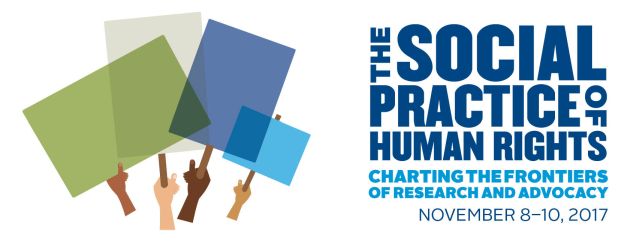
Start Date
11-10-2017 8:30 AM
Keywords
bathrooms, gender, race, intersectionality, policy
Abstract
Although rarely publicly discussed, bathrooms are a fundamental element of everyday life. In fact, the majority of the population does not question their right or ability to access public restroom facilities because they are a mundane aspect of daily routine. However, the recent rise of “bathroom bills” in state legislatures has sparked significant media coverage and highlighted activist movements seeking to guarantee safe, affirming, and legally protected access to bathrooms for people of all gender identities and expressions.
This paper will illustrate that bathroom access is not only a matter of public policy, but also a question of human rights. Recent data from the National Center for Transgender Equality survey of transgender Americans will demonstrate the ways in which transgender people experience hostility and violence while utilizing gendered restrooms. This is in contrast to the claims of bathroom bill supporters, who purport that cisgender women are the population who will be at risk of sexual violence if transgender people are permitted to use facilities that match their gender identity. Additionally, the paper will address the ways in which bathroom bills relate to the intersection of gender and race — particularly within the context of the gendered and racialized history of public bathroom facilities. Essentially, this paper asserts that bathroom bills are an effort to preserve the sanctity of whiteness through regulation of access to public restrooms as a result of historical and contemporary implicit racial fears related to the hypersexualized, predatory stereotypes of transgender women and men of color.
Included in
African American Studies Commons, American Politics Commons, History of Gender Commons, Lesbian, Gay, Bisexual, and Transgender Studies Commons
We Just Need to Pee: Bathroom Bills and the Intersection of Human Rights, Gender, and Race
Although rarely publicly discussed, bathrooms are a fundamental element of everyday life. In fact, the majority of the population does not question their right or ability to access public restroom facilities because they are a mundane aspect of daily routine. However, the recent rise of “bathroom bills” in state legislatures has sparked significant media coverage and highlighted activist movements seeking to guarantee safe, affirming, and legally protected access to bathrooms for people of all gender identities and expressions.
This paper will illustrate that bathroom access is not only a matter of public policy, but also a question of human rights. Recent data from the National Center for Transgender Equality survey of transgender Americans will demonstrate the ways in which transgender people experience hostility and violence while utilizing gendered restrooms. This is in contrast to the claims of bathroom bill supporters, who purport that cisgender women are the population who will be at risk of sexual violence if transgender people are permitted to use facilities that match their gender identity. Additionally, the paper will address the ways in which bathroom bills relate to the intersection of gender and race — particularly within the context of the gendered and racialized history of public bathroom facilities. Essentially, this paper asserts that bathroom bills are an effort to preserve the sanctity of whiteness through regulation of access to public restrooms as a result of historical and contemporary implicit racial fears related to the hypersexualized, predatory stereotypes of transgender women and men of color.


